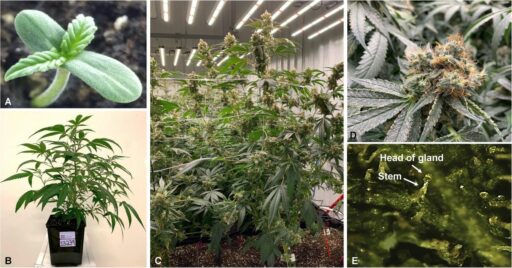Ann Arbor has witnessed a significant transformation in the realm of medical marijuana, reflecting broader changes in societal attitudes and scientific understanding. This guide delves into the various facets of medical cannabis, from historical developments and research advancements to patient narratives and legal challenges. It aims to provide a comprehensive overview of the current state and future prospects of medical marijuana in Ann Arbor’s healthcare landscape.
Key Takeaways
- Medical marijuana patient enrollment in Ann Arbor has surged by 610% since 2016, indicating a societal shift towards greater acceptance of cannabis for therapeutic use.
- Research led by the University of Michigan Medical School is at the forefront of uncovering the health implications of cannabis, emphasizing its potential in treating a wide array of conditions.
- Patient case studies highlight the efficacy of medical marijuana in managing chronic pain, improving mental health, and enhancing the quality of life for cancer patients.
- Legal and ethical considerations continue to evolve, with ongoing debates about federal and state regulations, social equity, and the distinction between recreational and medical cannabis use.
- The future of cannabis in healthcare looks promising, with innovations in research, potential policy changes, and emerging therapeutic trends shaping its trajectory.
The Rise of Medical Marijuana in Ann Arbor

Historical Context and Legalization
Ann Arbor’s journey with medical marijuana began in earnest when Michigan became the 13th state to legalize the substance for medical use in 2008. This pivotal moment was marked by the approval of a ballot initiative known as the Michigan Medical Marihuana Act. The act represented a significant shift in public policy and opened the doors for extensive research and medical use.
The legalization catalyzed a change in perception towards cannabis, transitioning from a stigmatized substance to one with recognized medical benefits. Research, previously hampered by legal restrictions, began to flourish, exploring the therapeutic potentials of cannabis and its derivatives.
With the changes in legal status, cannabis-derived substances such as cannabinoids and terpenes have gained more interest in medical research, leading to the identification of several medical effects and potential risks.
This evolution in the legal landscape has not only impacted the medical community but also influenced cultural attitudes, paving the way for a more informed and nuanced understanding of cannabis and its place in healthcare.
Current Trends in Patient Enrollment
The landscape of medical marijuana in Ann Arbor, and across the United States, has seen a significant uptick in patient enrollment over recent years. Between 2020 and 2022, the number of enrolled medical marijuana patients in the U.S. increased by a third, reflecting a broader trend of acceptance and recognition of cannabis’s therapeutic potential. This growth is not uniform across all states, however, with some interesting deviations.
In particular, Massachusetts and Maine stand out as the only two states with legal adult-use marijuana markets that have also seen a rise in patient registrations during the study period. Conversely, states like Arizona experienced a dramatic decrease in patient enrollment following the implementation of adult-use laws.
The reasons behind these trends are multifaceted. Researchers point to the growing legalization movement and the increasing acceptance of cannabis as key factors. Additionally, changes in policy during the pandemic may have facilitated easier access to medical marijuana, contributing to the rise in patient numbers.
| State | 2020 Enrollment | 2022 Enrollment | Change (%) |
|---|---|---|---|
| Massachusetts | Data Not Shown | Data Not Shown | Increase |
| Maine | Data Not Shown | Data Not Shown | Increase |
| Arizona | 295,295 | 129,836 | -56.0 |
The surge in patient enrollment is indicative of a shifting paradigm in healthcare, where medical marijuana is increasingly seen as a viable treatment option.
Cultural Shifts and Public Perception
In Ann Arbor, the enduring culture of cannabis is evident not only through the city’s history but also in its present-day social fabric. The increase in medical marijuana patient enrollment, which grew by 610% since 2016, is a testament to the shifting attitudes towards cannabis use. This surge reflects a broader trend of increasing cultural acceptance of cannabis, as highlighted by recent federal studies.
The landscape of cannabis in Ann Arbor is changing, with a growing recognition of the potential therapeutic properties of cannabis and a critical view of the consequences of the war on drugs.
The public perception of cannabis has evolved, moving away from stigma and towards a more nuanced understanding of its benefits and risks. This shift is supported by research from institutions like the University of Michigan, which contributes to the destigmatization of cannabis use.
- Lilac Diesel, a popular strain among local dispensaries, symbolizes the city’s embrace of cannabis culture.
- The dialogue around cannabis is expanding, with discussions on social equity and the therapeutic potential of substances like psilocybin.
- Ann Arbor’s dispensaries, such as those mentioned in the title ‘5 great marijuana dispensaries to check out during Ann Arbor’s…’, are at the forefront of this cultural shift, providing both a service and a space for community engagement.
Medical Advancements and Research

University of Michigan’s Contributions
The University of Michigan has been at the forefront of medical marijuana research, making significant strides in understanding its potential health benefits. The FDA has approved a clinical trial at the university, which focuses on the study of CBD, a non-psychoactive component of cannabis. This approval marks a pivotal moment, as it highlights the smoother path to research when CBD is the subject, rather than marijuana itself.
The Department of Psychiatry is particularly active, conducting research aimed at improving knowledge around mental health conditions and substance abuse. Their efforts are part of a broader initiative to explore the therapeutic effects of cannabis and its derivatives.
The University of Michigan’s commitment to medical marijuana research is evident in its educational programs, research opportunities, and community engagement.
Here are some of the key areas of research and education at the University of Michigan:
- Depression, bipolar, and anxiety disorders
- Addiction and substance abuse
- Therapeutic effects of cannabinoids
- Educational programs for medical students
The university’s vision extends beyond current studies, with a focus on developing comprehensive programs that integrate patient care, research, and education to advance the field of medical marijuana.
Recent Findings on Cannabis and Health
Recent research has shed light on the complex relationship between cannabis use and health outcomes. Studies have highlighted both potential therapeutic benefits and risks associated with cannabis consumption. For instance, investigations into the impact of medical marijuana laws have suggested that easier access to cannabis may lead to fewer reported days with poor mental health among individuals.
While the therapeutic potential of cannabis is promising, it is crucial to balance this with an understanding of the associated health risks.
The cardiovascular implications of cannabis use have also been a focus of recent studies. Some findings indicate an increased risk of cardiovascular events, such as stroke, in cannabis users, particularly when combined with other risk factors like high-intensity drinking or other substance abuse. However, the evidence is not yet conclusive, and further research is needed to fully understand the long-term health implications of cannabis use.
The Role of Cannabinoids in Medicine
The exploration of cannabinoids in medicine has unveiled a spectrum of therapeutic potentials. Cannabinoids have been identified as key players in modulating various physiological systems. The most well-known cannabinoids, THC and CBD, have been extensively studied for their effects on the central nervous system (CNS) and their potential to treat a range of disorders.
Cannabinoids have shown promise in reducing symptoms and improving quality of life for patients with conditions such as multiple sclerosis, chronic pain, and epilepsy. Research has also indicated potential benefits in the context of stroke and CNS injuries, where cannabinoids may play a role in neuroprotection and recovery.
The therapeutic landscape of cannabinoids is expanding, with ongoing research uncovering new applications and mechanisms of action.
While the public interest in the therapeutic effects of cannabinoids is high, it is crucial to balance this enthusiasm with rigorous scientific inquiry to fully understand their impact on health.
Patient Experiences and Case Studies

Chronic Pain Management
Ann Arbor’s medical marijuana community has seen a significant increase in patients seeking relief from chronic pain. Cannabinoids, such as THC and CBD, have been recognized for their analgesic properties, offering an alternative to traditional painkillers. This has led to a growing number of individuals exploring cannabis as a viable option for long-term pain management.
The interplay between cannabinoids and the body’s pain receptors suggests a promising avenue for therapeutic applications. While more research is needed, early findings indicate a potential for reducing reliance on opioids, which have been associated with addiction and overdose risks.
The table below summarizes some of the key findings from recent studies on cannabinoids and pain management:
| Study Title | Cannabinoid | Effect |
|---|---|---|
| Cannabinoid-Induced Inhibition of Morphine Glucuronidation | THC, CBD | Inhibition of UGT enzymes |
| Therapeutic applications of cannabinoids | Various | Potential therapeutic effects |
| Cannabis, Cannabinoids, and Cerebral Metabolism | CB1, CB2 Agonists/Antagonists | Reduced infarct volume, improved motor function |
As the legal landscape continues to evolve, patients in Ann Arbor are finding more support and resources to responsibly incorporate medical marijuana into their pain management strategies.
Mental Health and Psilocybin Correlations
The intersection of mental health treatment and psilocybin, a naturally occurring psychedelic compound, is gaining traction in the medical community. Recent studies suggest that psilocybin therapy, when administered under controlled conditions, may offer significant benefits for individuals suffering from various mental health issues. This is particularly relevant in Ann Arbor, where progressive attitudes towards alternative therapies are on the rise.
The use of psilocybin for mental health treatment is not associated with an increased risk of paranoia, according to findings by the American Medical Association. This challenges the stigma often associated with psychedelic substances and their effects on mental well-being.
While the research is still in its early stages, preliminary data indicates promising outcomes for patients with co-occurring mental and substance use disorders. The table below summarizes key findings from recent studies:
| Study Reference | Mental Health Condition | Outcome |
|---|---|---|
| Kessler RC et al. 2014 | Psychological distress | Improved symptoms |
| Elkington KS et al. 2010 | HIV/STI risk behaviors | Reduced risk |
| Garrison E. et al. 2021 | Social anxiety | Decreased anxiety |
These findings underscore the potential of psilocybin as a therapeutic tool, complementing traditional mental health treatments. As Ann Arbor continues to explore the benefits of medical marijuana and related substances, the implications for mental health care could be profound.
Cancer Treatment and Quality of Life Improvements
The intersection of medical marijuana and cancer treatment has opened new avenues for improving the quality of life in patients. Cannabis has been found to alleviate symptoms such as nausea, pain, and loss of appetite, which are common side effects of chemotherapy. Studies suggest that cannabinoids may also possess anti-tumor properties, although more research is needed to fully understand their therapeutic potential.
In Ann Arbor, patients and healthcare providers are increasingly considering medical marijuana as a complementary therapy in cancer care. The following table highlights key benefits reported by patients:
| Benefit | Description |
|---|---|
| Pain Relief | Reduction in chronic pain and inflammation |
| Nausea Control | Mitigation of chemotherapy-induced nausea |
| Appetite Stimulation | Improvement in appetite and weight management |
| Emotional Well-being | Enhanced mood and relief from anxiety |
While the promise of cannabis in cancer treatment is significant, it is crucial to approach its use with careful consideration of individual patient needs and the guidance of medical professionals.
The ongoing research and patient testimonials in Ann Arbor reflect a growing acceptance of medical marijuana as a viable option for cancer patients seeking to improve their quality of life. As the body of evidence grows, so does the potential for cannabis to become a standard part of cancer care protocols.
Navigating Legal and Ethical Considerations

Federal and State Regulations
The interplay between federal and state regulations on medical marijuana presents a complex legal landscape for patients, providers, and businesses in Ann Arbor. Federal agencies, including the Drug Enforcement Administration (DEA), are reevaluating cannabis scheduling, which could significantly impact the industry.
- Federal laws currently classify marijuana as a Schedule I substance, indicating a high potential for abuse and no accepted medical use.
- State laws in Michigan allow for medical marijuana use, creating a dichotomy with federal regulations.
- Recent discussions suggest a potential shift in federal policy, which may align more closely with state-level legalization efforts.
The evolving legal framework requires continuous monitoring and adaptation by stakeholders in the medical marijuana sector. As federal and state policies diverge, navigating the regulatory environment becomes increasingly challenging.
The table below outlines recent legislative actions that reflect the dynamic regulatory environment:
| State | Action | Impact |
|---|---|---|
| Ohio | Proposal to ban public consumption and Delta-8 THC products | Increased restrictions |
| Pennsylvania | Discussion on marijuana justice and equity | Progressive legislation |
| Maine | Bill to study drug decriminalization | Potential policy changes |
Social Equity and Racial Disparities
The legalization of medical marijuana in Ann Arbor has brought to light significant social equity and racial disparities. Communities disproportionately affected by past drug policies are now facing barriers to entering the legal cannabis market. These disparities manifest in various aspects of the industry, from business ownership to legal repercussions.
- Historical drug policies have disproportionately targeted communities of color.
- Legal barriers and high costs impede minority-owned business establishment.
- Disparities in legal outcomes persist, affecting minority communities.
Ensuring social equity in the cannabis industry requires proactive measures and policy reforms to address these systemic issues.
Efforts to rectify these disparities include expungement programs and initiatives to support minority entrepreneurs. However, the path to equitable access and representation in the cannabis industry remains fraught with challenges. It is imperative that Ann Arbor, and society at large, continue to strive for fairness and justice in the evolving landscape of cannabis regulation.
The Debate Over Recreational vs. Medical Use
The discourse surrounding cannabis often centers on the dichotomy between its recreational and medical applications. The distinction is crucial, as it influences regulatory frameworks, taxation, and public health strategies. For instance, the Marihuana Retailers Excise (MRE) Tax in Michigan imposes a 10% excise tax on top of the standard sales tax for recreational cannabis, underscoring the state’s approach to managing non-medical use.
While recreational cannabis is celebrated by some for its social and leisure benefits, medical marijuana is distinguished by its therapeutic potential. The debate intensifies when considering the impact on youth and public perception. Recreational use, especially among adolescents, is a growing concern due to potential health risks and the development of high-potency products.
The challenge lies in balancing the perceived harmlessness of marijuana with the need for informed public education on its effects, particularly for younger demographics.
Ultimately, the conversation is not just about legality but also about responsible use, societal norms, and the prioritization of health outcomes.
Looking Ahead: The Future of Cannabis in Healthcare

Innovations in Cannabis Research
The landscape of cannabis research is rapidly evolving, with new studies shedding light on the therapeutic potential of cannabinoids. The Journal of Cannabis Research is at the forefront, providing an open access platform for disseminating findings. This journal, sponsored by the Institute of Cannabis Research at Colorado State University-Pueblo, is a testament to the growing academic interest in cannabis science.
Recent advancements have focused on the multifaceted applications of cannabis in medicine. For instance, research into the effects of cannabis on stroke recovery presents a promising avenue. Moreover, comprehensive reviews are highlighting CBD’s potential in treating a wide array of conditions, from pain and cancer to schizophrenia and even COVID-related symptoms.
The shift in legal status across various countries has catalyzed a surge in medical research, leading to a deeper understanding of cannabis and its derivatives.
While the debate on cannabis’s role in stroke remains controversial, the overall trend points towards a nuanced appreciation of its medical benefits and risks. The following list encapsulates key areas of current research:
- Therapeutic applications of cannabinoids
- Cannabis’s impact on cerebral metabolism
- The role of cannabis in managing chronic conditions
- Trends in cannabis use post-legalization
As the body of evidence grows, so does the potential for cannabis to play a significant role in modern healthcare.
Policy Changes and Their Implications
The landscape of medical marijuana is continually reshaped by policy changes at both the state and federal levels. These shifts have profound implications for patients, healthcare providers, and the industry as a whole. For instance, recent legislative amendments have streamlined the process for patient enrollment, leading to a significant uptick in registered medical marijuana users.
The evolving policies have also spurred a wave of innovation, with new delivery methods and formulations being developed to meet patient needs more effectively.
While some policies have aimed at reducing barriers to access, others have introduced stricter regulations to ensure product safety and quality control. The balance between accessibility and regulation remains a critical point of discussion among policymakers and stakeholders.
- Medical Marijuana Patient Enrollment Grew 610% Since 2016
- A new federal study shows that enrollment in state-legal medical marijuana programs increased significantly across the U.S. in recent years.
Understanding the implications of these policy changes is essential for navigating the future of cannabis in healthcare. It is not just about the immediate impact but also about setting a precedent for how medical marijuana is integrated into mainstream medicine.
Emerging Trends in Cannabis Therapeutics
The landscape of cannabis therapeutics is rapidly evolving, with a surge in research and product innovation. A recent FDA report reveals a 300% increase in cannabis research over the last decade, highlighting the growing interest in the plant’s medical potential. This uptick in research is paving the way for new applications and treatments across a variety of conditions.
Cannabinoids, the active compounds in cannabis, are at the forefront of this trend. Currently, over 100 cannabinoids have been isolated, with THC and CBD being the most well-known. Their therapeutic applications range from pain management to potentially mitigating CNS injury-related pathologies.
The potential federal policy shift to acknowledge the therapeutic potential of cannabis could significantly reduce barriers to research, providing a clearer understanding of medical cannabis use and authorization patterns.
Emerging research suggests that cannabinoids could play a role in treating an array of conditions, including pain, cancer, schizophrenia, and even COVID-related symptoms. This is a promising development for patients seeking alternative treatments that may offer relief where traditional medications have fallen short.
Conclusion
As we have explored throughout this guide, the benefits of medical marijuana in Ann Arbor are becoming increasingly recognized, both by the medical community and the general public. The significant growth in patient enrollment, as highlighted by recent federal studies, underscores a broader cultural acceptance of cannabis for therapeutic purposes. With the University of Michigan Medical School at the forefront of research, and the acknowledgment of the disparate impact of cannabis prohibition on marginalized communities, Ann Arbor is emerging as a hub for progressive cannabis policy and patient care. The potential of medical marijuana to treat a wide array of conditions, from pain and cancer to schizophrenia and COVID, is supported by scientific reviews and the evolving landscape of medical research. As we move forward, it is crucial to continue to monitor the impacts, ensure equitable access, and educate both patients and healthcare providers on the responsible use of medical marijuana.
Frequently Asked Questions
What is the historical context behind the legalization of medical marijuana in Ann Arbor?
Medical marijuana was legalized in Ann Arbor as part of a statewide movement in Michigan that recognized the therapeutic benefits of cannabis for various medical conditions. The historical context includes advocacy, shifts in public perception, and evolving legal frameworks that have paved the way for medical marijuana to become accessible to patients.
How has patient enrollment in medical marijuana programs changed in recent years?
Patient enrollment in medical marijuana programs has seen a significant increase, with a federal study noting a 610% growth since 2016. This surge reflects the increasing cultural acceptance of cannabis for medical use, particularly in the wake of pandemic-era policies.
What contributions has the University of Michigan made to cannabis research?
The University of Michigan has been at the forefront of cannabis research, contributing to the understanding of its health effects and therapeutic potential. Researchers from the university have been involved in studies examining the role of cannabinoids in medicine and the impact of marijuana on brain health.
Are there any known correlations between psilocybin and mental health treatment?
Recent studies, including one by the American Medical Association, have found that the use of psilocybin for mental health treatment is not associated with an increased risk of paranoia. This suggests potential therapeutic applications for psilocybin in mental health without some of the adverse effects traditionally associated with psychedelic substances.
What are the legal and ethical considerations surrounding medical marijuana?
Legal and ethical considerations include navigating federal and state regulations, addressing social equity and racial disparities in cannabis enforcement, and the ongoing debate over the distinctions and implications of recreational versus medical use.
What future trends in cannabis therapeutics can we expect to see?
Emerging trends in cannabis therapeutics include ongoing innovations in research, potential policy changes that could further integrate cannabis into healthcare, and a continued exploration of cannabinoids’ role in treating a variety of conditions such as pain, cancer, schizophrenia, and even COVID-19.





